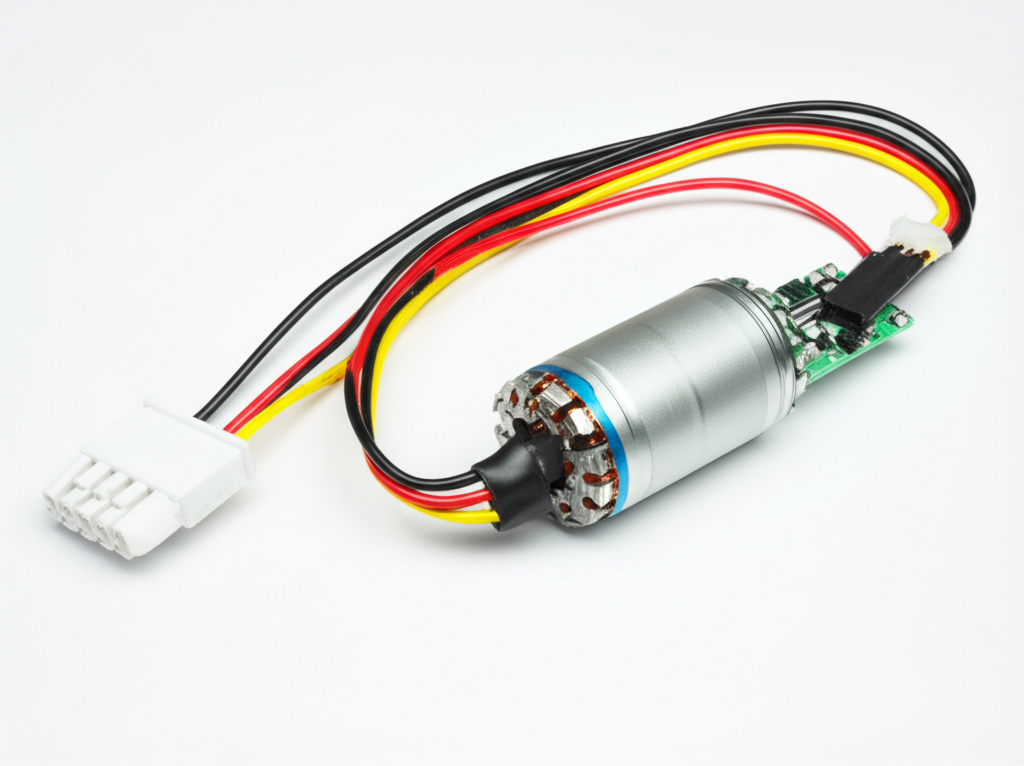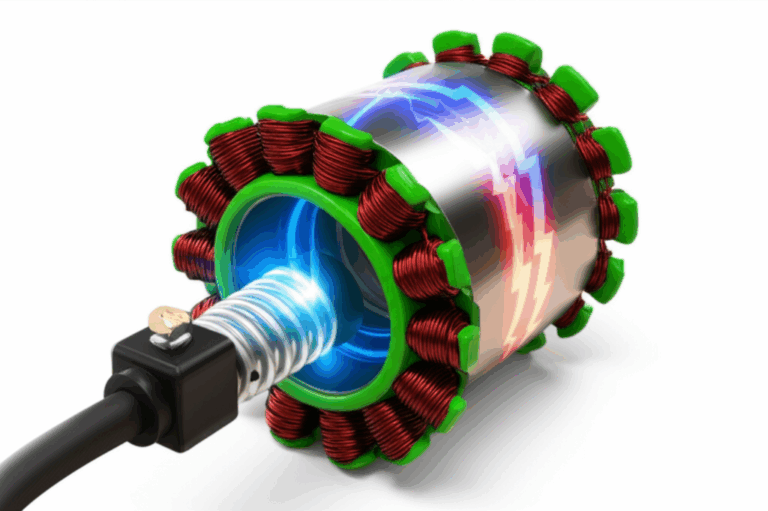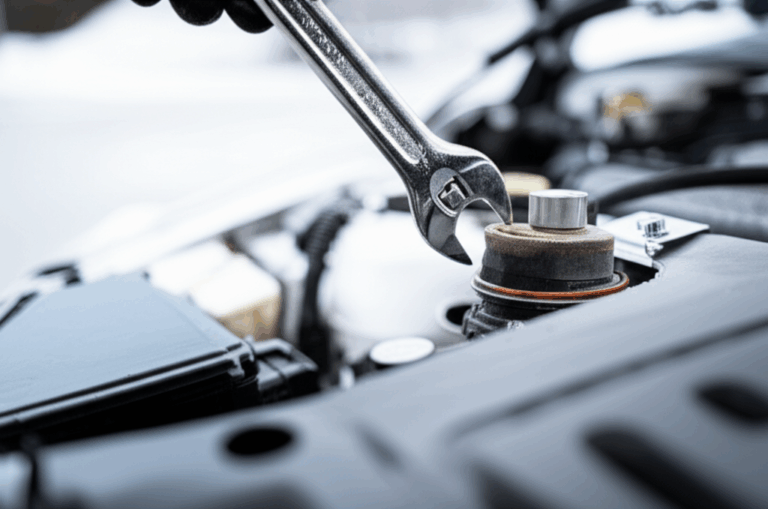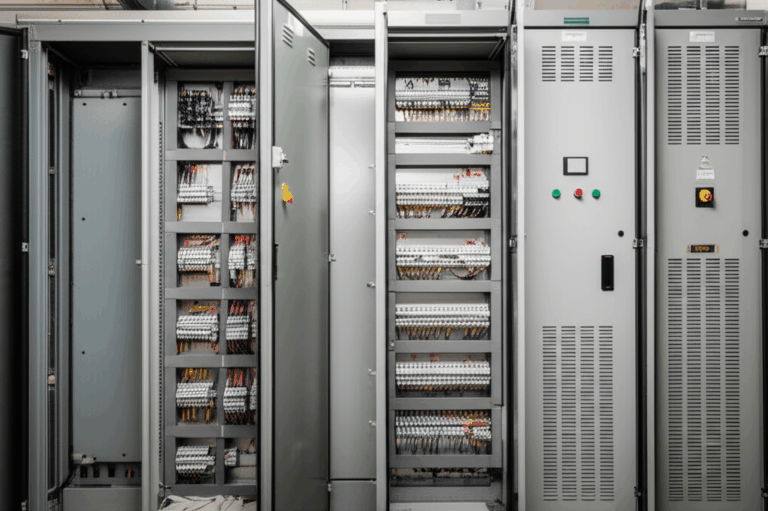
What Is a Brushless Motor? Understanding BLDC Technology
Table of Contents
- What Is a Brushless Motor? Understanding BLDC Technology
- Why Do Brushless Motors Matter Today?
- What Exactly Is a BLDC Motor?
- How Does a Brushless Motor Work?
- Are Brushless Motors AC or DC
- Brushless vs Brushed Motors: What Is Different
- What Are the Advantages of Brushless Motors
- What Are the Disadvantages and Trade Offs
- Where Do We Use Brushless Motors
- How Do You Choose a Brushless Motor
- Inside the Motor: Build Quality That Matters
- Control Basics: ESC, Sensors, and Smart Algorithms
- Performance, Heat, and Noise: What to Expect
- Real World Numbers: Quick Facts and Case Studies
- Common Questions About Brushless Motors
- Conclusion: The Future Is Brushless
- Key Takeaways
- References
A brushless motor is a type of electric motor that uses electronic commutation instead of brushes. It runs with high efficiency, long lifespan, and low maintenance. In plain words, it works smarter and lasts longer.
Why read this? Because brushless motors run your drone, your EV, your power tools, and your computer fan. If you pick the right one, you save energy, reduce noise, and get better torque and RPM. I will show you how it works, where it wins, and how to choose one that fits your job.
Why Do Brushless Motors Matter Today?
Problem. Many old brushed motors waste energy. They spark. They make noise. Brushes wear out. You lose power and time.
Agitate. Heat builds up. EMI rises. You stop work to swap brushes. Your drill feels weak. Your drone flight time drops. Your costs creep up.
Solution. A brushless DC motor (BLDC) fixes the problem. It uses a smart electronic speed controller (ESC) to switch the current in the stator windings. This gives better power-to-weight ratio, precision control, less noise, and longer lifespan. When you match the motor to the job, you get more torque, smoother RPM, and less heat. That means more runs, less stress, and real savings.
What Exactly Is a BLDC Motor?
A BLDC motor is an electric motor with a stationary stator and a rotating rotor. The rotor holds permanent magnets. The stator holds copper windings. An ESC sends power in the right order to create a turning magnetic field. The magnets chase the field. The rotor turns.
How is it different from a brushed motor? A brushed motor uses physical brushes and a commutator. The brushes rub on the commutator to switch current. That creates friction and dust. A brushless motor replaces that with clean, electronic commutation. No rub. No sparks. Less wear.
You can find two main layouts. An inner rotor brushless motor has the magnets in the center. The outer rotor brushless motor has the magnets around the outside. Some motors add a gearbox. Some use direct drive. Each type fits a different need.
How Does a Brushless Motor Work?
Think of the stator windings as smart magnets that blink on and off in a pattern. The ESC looks at the rotor position and fires the right coils. This makes a spinning magnetic field. The rotor magnets lock on and follow. That spin makes torque at the shaft.
Two ways help the ESC see the rotor. One uses Hall effect sensors. We call that a sensored brushless motor. It reads exact position at low speed and start up. The other method is a sensorless brushless motor. It detects back electromotive force (BEMF) in the windings. That saves parts and cost. It works great once the rotor is moving.
The commutation method also matters. Trapezoidal commutation is simple and common. Sinusoidal commutation and field oriented control (FOC) give very smooth phase currents and low torque ripple. FOC uses a microcontroller or a digital signal processor (DSP) to run fast math. The result is quiet, cool, and efficient motion.
Are Brushless Motors AC or DC
Good question. We feed a BLDC from a direct current (DC) source like a lithium ion battery. Yet the ESC makes a three phase waveform that looks like alternating current (AC). So you can say it is DC powered with AC like drive. It is the best of both worlds.
Brushless vs Brushed Motors: What Is Different
Here is a head to head look at the two.
| Feature/Metric | Brushless Motors (BLDC) | Brushed Motors | Notes |
|---|---|---|---|
| Efficiency | 85 to 90% and often higher | 75 to 80% or lower | Less waste means cooler parts and longer run time |
| Lifespan | 10,000+ hours and bearing limited | 1,000 to 5,000 hours and brush wear limited | Robots often pass 15,000 hours without wear parts failing |
| Maintenance | Low or none | High and you must replace brushes | Less dust and less service time |
| Power to Weight | High and often twice as much | Lower | Great for drones and tools |
| Noise and EMI | Low and no brush arcing | Higher due to brush sparks | Better for medical and audio |
| Thermal Performance | Excellent and heat in stator | Moderate and heat in rotor | Easier to cool the stator side |
| Cost and Complexity | Higher initial and needs an ESC | Lower upfront | Long term savings often win |
Problem. You want power and range. You need stable RPM and steady torque. Your gear must run cool and quiet.
Agitate. Brush wear slows you down. Heat cuts life. Hand tools feel bulky when power is low.
Solution. With BLDC, you get less friction, less EMI, and more precision control. You also get higher power density. You can do more with less mass.
What Are the Advantages of Brushless Motors
- Higher efficiency. Less energy waste and better energy consumption means more battery time.
- Longer operating lifespan. No brushes to wear out. Bearings and insulator parts last longer.
- Reduced maintenance. You do not swap brushes or clean a commutator.
- Quieter operation. No brush arcing. Lower electromagnetic interference (EMI).
- Superior power to weight ratio. Great for RC brushless motor uses and drone brushless motor thrust.
- Precise speed and torque control. Easy variable speed. Smooth torque. Low cogging torque with good design.
- Improved thermal performance. Heat sits in the stator. You can cool it with a cooling fan or a heat sink.
I like to say it this way. Brushless gives you more punch and less fuss.
What Are the Disadvantages and Trade Offs
No motor is perfect. You should know the downsides.
- Higher initial cost. The ESC and permanent magnet rotor add price.
- More complex control electronics. You need a good motor controller and smart code.
- EMI still needs care. Bad wiring or poor shielding can raise noise.
- Repair can be tricky. You do not swap brushes. You check the ESC, sensors, and windings.
Still the gains often beat the costs over time. That is why markets grow.
Where Do We Use Brushless Motors
You see BLDC motors almost everywhere.
- Consumer electronics. Drones, RC vehicles, computer fans, and hard drives.
- Automotive. Electric vehicle (EV) drive units, pumps, and e bike brushless motor hubs.
- Power tools. Cordless drills, saws, and grinders with brushless motor labels.
- Home appliances. Washing machine brushless motor, vacuum cleaner brushless motor, and HVAC brushless motor blowers.
- Industrial and medical. Robotics, pumps, compressors, and medical devices with precision control.
- Generators. Some designs also work as a generator brushless motor in regen mode.
In EVs you may also hear about induction motor, servo motor, stepper motor, synchronous reluctance motor, and switched reluctance motor. Each has a place. BLDC is common when you want high efficiency, strong torque, and compact size.
How Do You Choose a Brushless Motor
Start with the job. Then match the motor.
- Power and voltage. Check your battery or supply. Note the current you can deliver.
- Torque and RPM. Use the tool or prop curve. Pick a motor with headroom.
- Size and weight. Aim for a compact motor design with high power density.
- Control needs. Do you need sensored for smooth start and precision control. Or will sensorless do.
- Thermal management. Plan for heat dissipation. Keep coils under safe temperature to avoid saturation.
- Environment. Watch EMI, dust, and moisture. Choose good bearings and seals.
- Budget. The cost of brushless motor runs higher at first. Yet reliable motor operation and long life cut total cost.
If you build motors, mind the core. Quality stator and rotor stacks lower loss and cogging torque. Good steel cuts eddy currents and boosts efficiency.
Inside the Motor: Build Quality That Matters
Let us peek inside. The stator holds thin steel sheets called laminations. These shape the magnetic field and lower losses. The rotor holds permanent magnets. The magnets pull and push on the field. This dance makes electromagnetic force and motion. Under the hood you find coils, insulators, and bearings. Better parts make better motors.
Here is where partners help. The quality of the stator core lamination sets your iron losses. Tight stacks and smooth slots mean less heat. The bldc stator core shape sets torque ripple and cogging torque. The outer rotor and inner rotor stacks also matter. For the spinning part, a precision rotor core lamination keeps balance and field strength high.
The steel itself counts. High grade electrical steel laminations or silicon steel laminations cut loss at high RPM. You may see CRGO lamination core or CRNGO lamination grades used in transformers and motors. Good motor core laminations support quiet and cool work. If you source parts, look for consistent slit, burr control, and clean stacks. You can explore full offerings in motor core laminations.
Control Basics: ESC, Sensors, and Smart Algorithms
The electronic speed controller (ESC) is the brain. It reads Hall effect sensor signals or BEMF. It sets three phase power to the coils. It limits current. It sets voltage. It handles acceleration, braking, and regeneration in some systems.
Some ESCs talk over Controller Area Network (CAN bus). Others use Bluetooth for setup. Many run on a microcontroller or DSP. High end drives use FOC. This method aligns the field with the rotor with math based on Faraday’s law of induction and the Lorentz force. Sounds fancy. It just means smooth power and less heat.
You also pick the commutation shape. Trapezoidal is simple and tough. Sinusoidal lowers noise and torque ripple. Both can work well. The best choice depends on your load and budget.
Performance, Heat, and Noise: What to Expect
Performance ties to the design. Power to weight improves with strong rotor magnets, low loss stator steel, and tight windings. Good thermal management pulls heat from the stator. A cooling fan or heat sink helps. When heat drops, efficiency climbs. Life grows as well.
Noise comes from both EMI and sound. You cut EMI with short wires, shields, and filters. You cut sound with sinusoidal commutation, FOC, and solid bearings. You also cut cogging torque with skewed slots or careful motor design principles. Smooth slots lower ripple at low speed.
Do not forget supply health. If your battery sags, current spikes and voltage dips. That makes heat. Pick the right ESC and cables. Use clean grounds. Keep electromagnetic interference in check.
Real World Numbers: Quick Facts and Case Studies
Here are solid numbers you can use.
I have seen this in my own work. A cordless power tool motor that moved to BLDC ran cooler and cut service calls. A blower fan brushless motor in HVAC saved power on every shift. A small robotics joint with FOC held position with less buzz and less heat.
Common Questions About Brushless Motors
- Are brushless motors AC or DC. Power comes from DC. The ESC drives the windings with three phase AC like signals.
- Are brushless motors “better”. Often yes. They give efficiency, lifespan, and precision. They do cost more. You still win in most tasks.
- How long do brushless motors last. Many pass 10,000+ operating hours. Bearings tend to set the limit.
- Can you convert a brushed motor to brushless. Not in a simple way. The parts and design are different.
Conclusion: The Future Is Brushless
The trend is clear. As we need more work from less weight, BLDC wins. EVs, drones, power tools, and home appliances move to brushless. Controls get smarter. Motors run cooler. Designs use better steel and smarter ESC code. You get more reliable motor operation with less fuss.
Problem. You face energy waste and short life with old motors.
Agitate. Heat, noise, and downtime slow your team.
Solution. Pick a brushless motor with sound stator and rotor stacks and a solid ESC. Use modern motor control algorithms like FOC. Control EMI. Plan thermal management. When you need quality cores, look for partners who focus on tight stacks, good material, and consistent cuts. That choice pays back in performance and peace of mind.
Key Takeaways
- A brushless DC motor (BLDC) uses electronic commutation with an ESC instead of brushes.
- Core parts are the stator, rotor with permanent magnets, and optional Hall effect sensors.
- BLDC gives higher efficiency, longer lifespan, less maintenance, and smoother control.
- Pick motors by torque, RPM, voltage, current, size, and thermal needs.
- Use FOC for smooth phase currents and low torque ripple when you need quiet motion.
- Quality laminations in the core help cut loss and heat. They boost power density and life.
- BLDC shines in EV, robotics, HVAC, power tools, pumps, compressors, and drones.
- Good wiring and shielding cut electromagnetic interference (EMI) and noise.
References
- IEC 60034, Rotating Electrical Machines, International Electrotechnical Commission.
- TI, Field Oriented Control of Permanent Magnet Motors, Application Reports.
- Infineon, Sensorless BLDC Control Basics and Applications.
- Nidec, Brushless DC Motor Fundamentals, Technical Guide.
- U.S. DOE, Energy Efficiency and Electric Motors, Technology Fact Sheets.
- Microchip, Sensorless BLDC Control Using Back EMF.
- IEEE, Fundamentals of Electric Drives and Motor Control.
- Texts that explain core physics such as Faraday’s law of induction and the Lorentz force by standard electromagnetism references.








